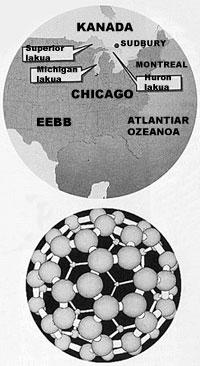185 billion years ago…
On our planet “time capsules” have been found created long before Earth itself, and researchers believe they have been created before the Sun. These “capsules”, which arrived 185 billion years ago in southern Canada, remained in hiding, not on their own, but by a meteorite at the height of the Everest Chain.

When the remains of the meteorite were analyzed, boxes of carbon atoms were found as a balloon. Scientists then began to work with several hypotheses; they immediately began to analyze whether these “capsules” emerged before the meteorite approached Earth, but without a complete demonstration. To release this knot, that is, to know why these carbon boxes were inside the meteorite, deeper studies were conducted. They immediately discovered helium in microscopic “balloons.”
But it was not a helium of any kind, as it was not a helium produced in the Earth's atmosphere or within the Solar System. An old star, like the one before the Sun, has had billions of years before releasing helium and carbon.
Knowing their origin, the scientists addressed a second knot: how did the helium not flee when the meteorite hit the Earth? One may think that the heat generated in the collision should release the helium, but it was not so. According to experts, on the way to Earth, the meteorite would fragment into the atmosphere and because some fragments were relatively small in weight and body, colliding with Earth did not generate enough heat to release helium. That is why. However, at the moment everything is a hypothesis.





